Table of Contents
related to : Design Patterns
by cocky eek
There is a Timeless Way of Building
Pattern_language can be a tool for finite combinatory systems which allow us to create an infinite variety of unique combinations, appropriate to different circumstances, at will. Before I’ll come to patterns specified for inflatable structures, which can be useful for anyone interested in building ‘living inflatable structures’. First I like to summarize Alexander’s -Pattern Language-. This -Pattern Language- had its influence not only in architecture but as well on programming language design, software engineering and other design methodology in computer science, even The Wiki was based on his design patterns.
‘There is one timeless way of building. It is a thousand years old, and the same today as it has ever been. The great traditional buildings of the past, the villages and tents and temples in which man feels at home, have always been made by people who were very close to the center of this way. It is not possible to make great buildings, or great towns, beautiful places, places where you feel yourself, places where you feel alive, except by following this way. And, as you will see, this way will lead anyone who looks for it to buildings which are themselves as ancient in their form, as the trees and hills, and as our faces are.’ [Christopher Alexander]
Being alive
Places which have the quality of being alive, invite this quality to come to life in us. And when we have this quality in us, we tend to make it come to life in towns and buildings which we help to build. It is a self-supporting, self-maintaining, generating quality. It is the quality of life. And we must seek it, for our own sakes, in our own surroundings, simply in order that we can ourselves become alive.
Patterns of events
Those of us who are concerned with buildings tend to forget to easily that all the life and soul of a place, all of our experiences there, depend not simply on the physical environment, but on the patterns of events which we experience there. These patterns of events which create the character of a place are not necessarily human events.
Compare the power and importance of these events with the other purely geometrical aspects of the environment, which architects concern themselves with.The life of a house, or a town, is not given to it directly, by the shape of its buildings, or by the ornament and plan- it is given to them but by the quality of events and situations we encounter there. A building or a town is given its character, essentially, by those events which keep on happening there most often.
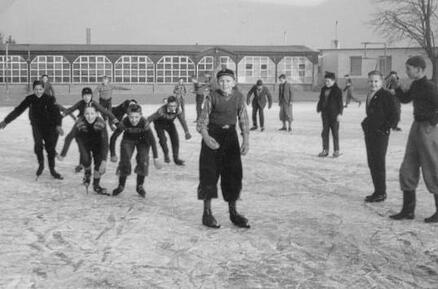
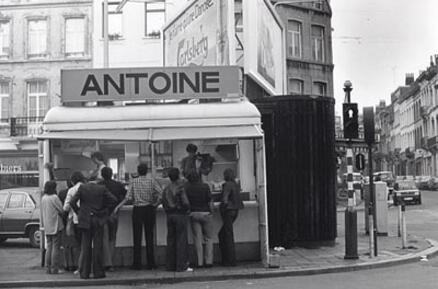
One can focus on the ‘pure aesthetics’ of a place, or on its dynamics Famous Belgium fried potato stand: it is mostly not aesthetics an sich
what brings people together.
The world does have a structure, just because these patterns of events which repeat themselves are always anchored in the space. The action and the space are indivisible. The specific patterns out of which a building or a town is made may be alive or dead. To the extent they are alive, they let our inner forces loose, and set us free; but when they are dead they keep us locked in inner conflict.
“The sunshine shining on the windowsill, the wind blowing in the grass are events too-they effect us just as much as social events. A field of grass is given its character, essentially, by those events which happen over and over again- millions upon millions of times. The germination of the grass seed, the blowing wind, the flowering of the grass, the movement of the worms, the hatching of the insects…”
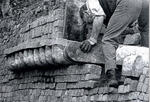 The aim in contemporary architecture is often its end result (the building itself). But when natural processes are one's aim and not their end results, one can no longer speak of an aesthetic evaluation, because all that does is enable one to form an opinion about concrete finished products. 'Beauty' [in a natural process] disappears, making way for completely unanticipated, new 'aesthetic' values. Beauty is perishable. Everything is and is always in motion.
-Louis le Roy-
The aim in contemporary architecture is often its end result (the building itself). But when natural processes are one's aim and not their end results, one can no longer speak of an aesthetic evaluation, because all that does is enable one to form an opinion about concrete finished products. 'Beauty' [in a natural process] disappears, making way for completely unanticipated, new 'aesthetic' values. Beauty is perishable. Everything is and is always in motion.
-Louis le Roy-
How does it feel
Imagine someone who proposes that modular aluminium wall panels are of great importance in the construction of houses. Simply ask him how he feels in rooms build out of them. He will be able to do dozens of critical experiments which “prove” that they are better, cleaner, healthier, lighter…but the one thing he will not be able to do, if he is honest with himself, is to claim that the presence of modular panels is a distinguishing feature of the places in which he feels good. His actual feeling is direct, and unequivocal. It is not the same as asking someone his opinion, someones taste or what a person thinks of an idea. In short, the scientific accuracy of the patterns can only come from direct assessment of people’s feelings, not from arguments or discussions.
Each pattern should be a source of life, a generative, self-sustaining pattern, and be worth copying. By defining patterns we must rely more on our feelings than intellect. When we feel the wholeness of the system it feels good to us. By contrast, patterns made from thought, without feeling, lack empirical reality entirely. Some designs from architects may excite our intellect, or our imagination; but when we ask ourselves how we shall feel in a place which is really built like this we know that it will not make us feel wonderful. It comes about because our feelings always deal with the totality of any system. If there are hidden forces, hidden conflicts, lurking in a pattern, we can feel them there. And when a pattern feels good to us, it is because it is a genuinely wholesome thing, and we know that there are no hidden forces lurking there.
The process of making things
If we compare the buildings of today with former times, is that the last one has much more variety, and more detail: there are more internal differences among the parts; they are marked by greater differentiation. there are rooms of different sizes, doors of different widths, columns of different thickness according to their place in the building, ornaments of different kinds in different places, gradients of window size from floor to floor.
The character arises of the old buildings is not because of the history, or because the process which built them were so primitive. These buildings have this character because they are so deep, because they were made by a process which allowed each part to be entirely one with its surroundings, in which there is no ego left, only the gentle persuation of the necessities.
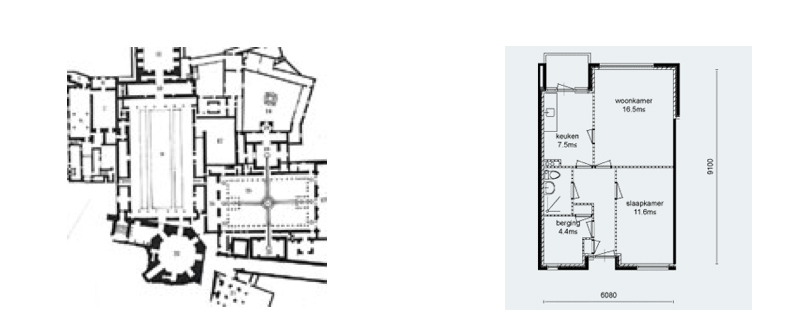
Local Symmetries, Organic, small-scale symmetry versus an average dutch house in a average vinex council estate
On modularity
The idea that a building can-and ought- to be made of modular units is one of the most pervasive assumptions of twentieth-century architecture. Nature is never modular. Nature is full of almost similar units (waves, raindrops, blades of grass-) but though the units of one kind are all alike in their broad structure, no two are ever alike in detail.
1. the same broad features keep recurring over and over again. 2. in their detail appearance these broad features are never twice the same.
On the one hand all oak trees have the same overall shape, the same thickened twisted trunk, the same crinkled bark, the same shaped leaves, the proportions of limbs to branches of twigs. On the other hand, no two trees are quite the same. The exact combination of height and width and curvature never repeats itself; we cannot even find two leaves which are the same.
modularity is just a concept.
The quality of places is never twice the same, because it always takes its shape from the particular place in which it occurs. Each part is slightly different, according to its position in the whole. Each branch of a tree has a slightly different shape, according to its position in the tree. Each leaf on the branch is given its detailed form by its position on the branch.

1.[Uit: L. Carl Brown, From Madina to Metropolis. Princeton, 1973] de stad Tunis
Modern governments in Turkey have build next to the traditional cities, new districts with a total different character: lang straight boulevards and a regular pattern of cross-streets.
2. [Uit: Metin Sözen, Diyarbakir'de Türk mimarisi. Istanbul, 1971] The same contrast is clearly seen on this old birds-eye-viewpicture of Diyarbakir, Turkey
Differentiating space
Within this process, every individual act of building is a process in which space gets differentiated. It is not a process of addition, in which pre-formed parts are combined to create a whole: but a process of unfolding, like the evolution of an embryo, in which the whole precedes in parts, and actually gives birth to them, by splitting (so becoming different in the process of growth or development)
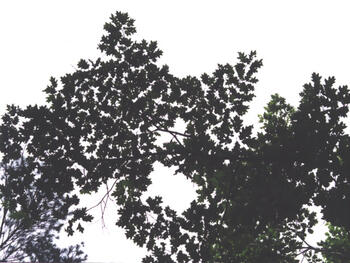
Only a process of differentiation, because it defines the parts within the whole, can generate a natural thing; because this kind of process can shape parts individually, according to their position in the whole.
Patterns have a certain order in a design, so you have to understand which features are dominant, and which are secondary, and so the sequence of the patterns will become clear. It is not a sequence of putting parts together, but a whole, which expands, crinkles, differentiates itself. When the order of the patterns are correct, the differentiating process allows the design to unfold as smoothly as an opening flower.
Get rid of the ideas which come into your mind. Get rid of the pictures you have seen in magazines. Insist on the pattern, and nothing else. The pattern and the real situation, together, will create the proper form, within your mind, without you trying to do it, if you allow it to happen. There is no reason to be afraid of giving up your control over the design. If the patterns make sense, you do not need to control the design.
As the design unfolds, and new patterns our brought into play, the entire design has to shift and resettle itself in your mind with every new pattern. Each new pattern in the sequence transforms the whole design created by the previous patterns- it transforms it as a whole, it shakes it up, and realigns it. This can only happen if the design is represented in an utterly fluid medium; it cannot happen in any medium where there is the slightest resistance to change. A drawing, even a rough drawing, can be very rigid-it embodies a commitment to details of arrangement far beyond what the design itself actually calls while it is in an embryonic state. The only medium which is truly fluid, which allows the design to grow and change as new patterns enter it, is the mind.
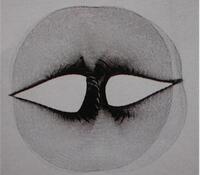
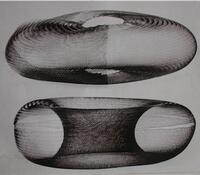
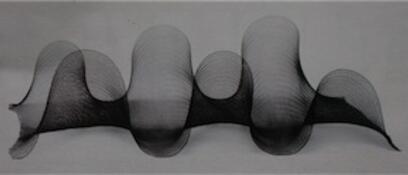
Maria blaisse, a dutch designer/researcher in the field of flexible materials and worked among with o.a. Issey Miyake, never makes a drawing of how she wants design to be. The objects above are created by focusing purely on the qualities of a flat woven plane out of which 3d forms were unfolded. “In one form many qualities and movements are captured, by interfering with them you can release these energies your way. Once you start working like this you can capture the movements that you recognize and be as creative and efficient as nature.Then your form contains a vibrant energy.”
The building process
It is essential that ‘a builder’ works only from rough drawings: and that he carry out the detailed patterns from the drawings according to the processes given by the pattern language in his mind. This is common place in nature. When the spider builds its web, the process is standardized; but the parts which are created are all different. Each web is beautiful, unique, perfectly adapted to its situation. Yet it is created by a standard process; and there is just one process. It is very simple. Yet this simple process interacts in an infinite variety of ways with different circumstances to produce different particular webs.
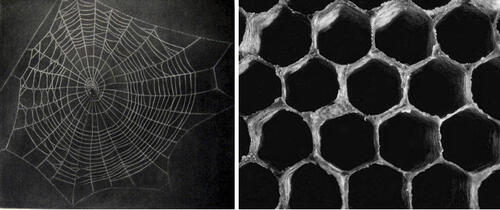
generated spases: spider web, close up of a honeycomb
Or for instance waves; the actual concrete waves themselves are always different. This happens because the patterns interact differently at every spot. They interact differently with one another. And they interact differently with the details of their surroundings. So every actual wave is different, at the same time that all its patterns are the same precisely as the patterns in the other waves.
In such a system there is endless variety; and yet at the same time there is endless sameness. No wonder we can watch the waves for hours; no wonder that a blade of grass is still fascinating, even after we have seen a million of them. In all those sameness, we never feel oppressed by sameness.
When a group of people try to do something together
When a group try do do something together, they usually fail, because their assumptions are different at every stage. But if they come from language the assumptions are almost completely explicit from the start. Once they agree about a language, the actual emergence of the form is simple and fluid. In the building stage the group uses the site “out here in front of them” as the medium in which the design takes its shape. People walk around, wave their arms, gradually build up a common picture of the building as it takes it shape –and all still without making a drawing. The process of shaping a building, simply by walking in and out, waving their arms, thinking together, placing stakes in the ground, will always touch people deeply, they will feel alive
About beauty
How was it possible that any simple farmer could make a house or a barn, a thousand times more beautiful than all the struggling architects of the last fifty years would do. Well they simply copying the other barns in their neighbourhood which function.
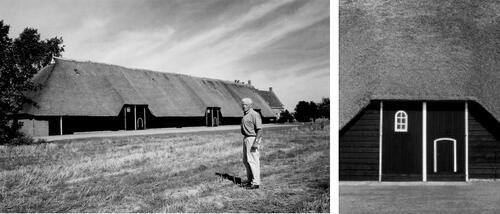
This is a very typical farmhouse in Zeeland an area in the southwest of Holland. These farmhouses are completely demountable (a technique blown over from the Vikings) so one could take it apart, transport it over Zeeland’s rich waters and settle one island further if you want. The roof is from straw, which grows in that area, it gives a lot of comfort: it keeps warm in the winter and stays cool in the summer. People made their own paint from fresh oxblood en lijnolie so all the barns had this typical ox-red color in their interiors, and outside they paint their barns with black tar, with white frames around its doors, so one could find the opening when coming home drunk in the dark. Though still one had to watch out; to enter one had to make a high step; this was made to prevent the waters coming in at high tide. All its patterns were worked out well over time for that specific area, so it was worth to copy the patterns and these rooted farmhouses can be seen all over Zeeland.
The multiplicity of living patterns
The more living patterns there are in a building and its environment -the more it comes to life as an entirety, the more it glows, the more it has this self-maintaining fire, which is the quality without a name.The quality without a name occurs not when an isolated pattern occurs, but when an entire system of patterns, interdependent, at many levels, is all stable and alive.
A building in which all the patterns are alive has no disturbing forces in it. The people are relaxed; the plants are comfortable; the animals pursue their natural paths; the forces of erosion are in balance with the natural process of repair which the configuration of the building encourages; the forces of gravity are in balance with the configuration of the beams and vaults, and columns, and the blowing of the wind; the rainwater flows naturally in such a way that it helps to grow the plants which are in balance with themselves to grow in between the cracks in the paving stones, the beauty of the entrance, the smell of the roses in the evening in the outdoor room.

“When I am working on a problem, I never think about beauty but when I have finished, if the solution is not beautiful,
I know it is wrong.” –Buckminster Fuller–
More on inflatables:
- Inflatable Inspirations: 15 sections of visual -Inflatable Inspirations-. Each section by far don't give a complete overview in its field but I hope all works are, in one way or another, inspiring and can lead to new vibrations…
- pneumatology: Lightness as a state of being. Some problem domains in our contemporary architecture.
- An Inflatable Pattern Language: A despription of the patterns based on the structures of `The Architects on Air (UK), which can be useful for anyone interested in building ‘living inflatable structures’.
- Design Considerations For Inflatable Structures: the most common obstacles one comes across in inflatable structures are mentioned. No solutions will be given to any design problem, but some suggestions will be given so now and then…
- Inflatable Links: An inventory of links for innovative inflatable- manufacturers, research labs, producers and other people working with inflatables both from the artistic and in the technological field, and links with innovative inflatable architecture, objects, & robots
- [Related reading notes: The Timeless Way Of Building by Christopher Alexander, Cradle to Cradle by William McDonough & Michael Braungart, The Eyes of the Skin by Juhani Pallasmaa]
